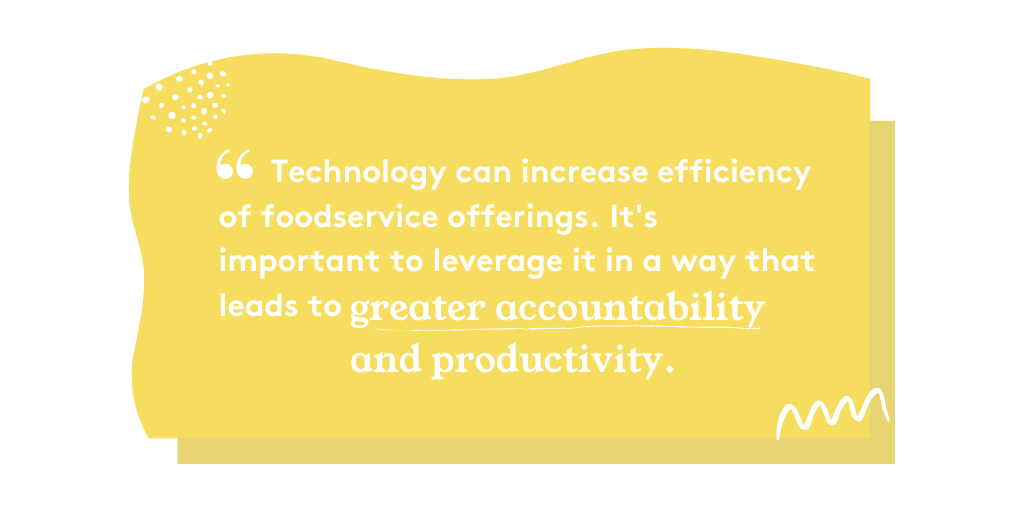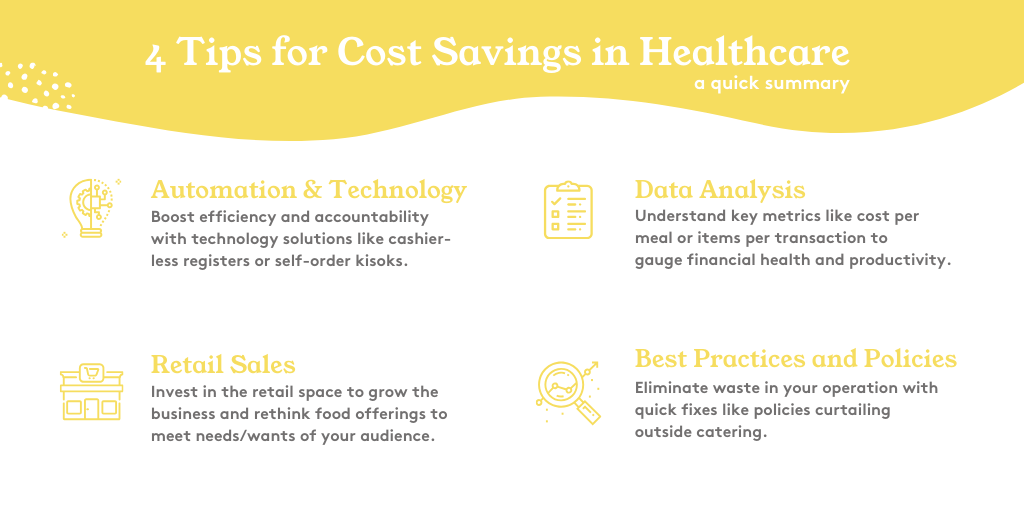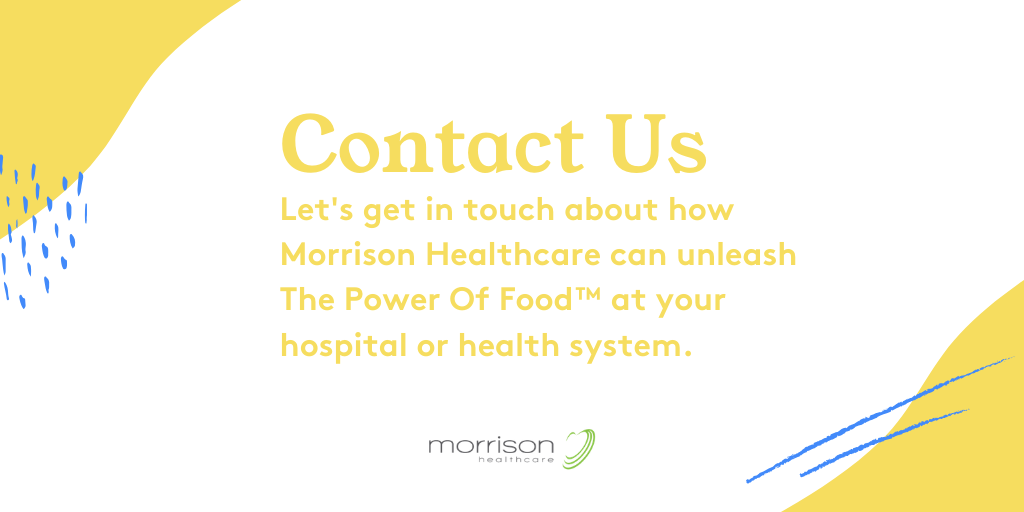4 Tips to Control Foodservice Costs in Healthcare
Food is a powerful tool. It has the ability to bring people together, nourish the body and make a business thrive. Within healthcare organizations, foodservice is a critical component of success, but it can also be a major expense.
When it comes to foodservice, there is a natural balancing act for hospital administrators. The desire to provide a quality food offering is often seen as counter to controlling cost. It can be a challenge to find that balance, but there are options that will ensure your patients, employees and visitors can have a great experience while also bolstering your bottom line.
Jeff Almy, vice president of finance for Morrison Healthcare, has spent his career benchmarking and budgeting for some of the country’s largest companies. At Morrison, he has found ways to align patient satisfaction with the financial health of an organization. As part of this, he has four tips that can help any healthcare organization focused on controlling foodservice costs.
1. Automation & Technology

Technology can increase the efficiency of foodservice offerings. It’s important to leverage this technology in a way that leads to greater accountability and productivity.
Take, for instance, cashier-less registers or self-order kiosks. They are both technology solutions that solve a similar problem by streamlining productivity. You can move customers through the process faster using this technology, which also has the added benefit of requiring fewer FTEs (full-time employees). That’s a savings to your bottom line, but it also has other, less prominent effects. It has been shown that automating the payment and/or ordering process can lead to better inventory control.
Successfully integrating technology is about measurement. With improved technology solutions, we can better measure our success and create data that can lead to additional process improvements.
2. Data Analysis
It’s critical to understand the key metrics that play a role in the financial health of an organization. Beyond the numbers, leaders need to know what is driving those metrics and how to best impact them.
In foodservice, there are numerous data points we look at. To name a few:
- Meals per productive labor hour
- Cost per meal
- Items per transaction
- Turnover rate of employees
These are four of the most important pieces where a healthcare organization can make a quantifiable impact on the bottom line. Once you have this information, look to the root cause of the problem and address the issue.
For instance, meals per productive labor hour is essentially a gauge of productivity. If you are benchmarking below industry standards or are not running a profitable foodservice operation, you may need to address this area. Productivity can be solved by taking a hard look at staffing to make sure the schedule fits with needs. Ensuring your schedule is optimized to fit customers’ habits can have a significant and immediate impact.
3. Retail Sales
Retail foodservice can be a boon for hospitals and healthcare systems, but it’s also a benefit for the employees and patient families.
Retail is the classic example of spending money to make money. You have to invest in retail space to grow the business. That doesn’t mean you have to knock down walls or expand the footprint, but it does mean rethinking your food offerings and meeting the needs and wants of your audience, particularly the internal audience.
Hospital staff is critical to the success of a retail food operation. If employees have a bad experience, then you may lose their business permanently. That’s why it’s important to offer new and rotating food options, while also fostering buy-in for the program. To do this, hospitals often offer employee discounts and tout the importance of healthy food offerings.
While adopting a robust retail sales operation may require an upfront investment, it can prove to be a major financial success as well as an employee benefit that can aid recruitment and retention efforts.
4. Best Practices and Policies
Best practices and policies are about eliminating waste in your operation. There is considerable waste in foodservice, but that can be curtailed through improved processes, particularly when it comes to inventory management and cash handling. Having the right set of policies that addresses these issues prevents food loss and leakage at the register, significantly influencing the finances of the program.
A quick win can come from a policy curtailing outside catering. If meetings and events are using an external catering vendor, you are essentially losing revenue that should be coming to your internal catering offering. Internal catering and a policy supporting it will bring a new revenue source and allow a facility to maximize the output of its existing staff. With policies in place that align with industry best practices, a food service operation can become an integral part of a hospital’s operation and its bottom line.
Controlling Foodservice Costs

Through experience, Morrison Healthcare has developed a playbook that guides teams who are managing the business. We provide retail sales concepts that have proven track records of engagement and revenue, while also providing the perspective needed to properly analyze data and make the right decisions. There are savings to be had in foodservice. It’s just a matter of looking in the right place and finding the right partner.
To learn how we can help you control foodservice costs please Contact Us.


